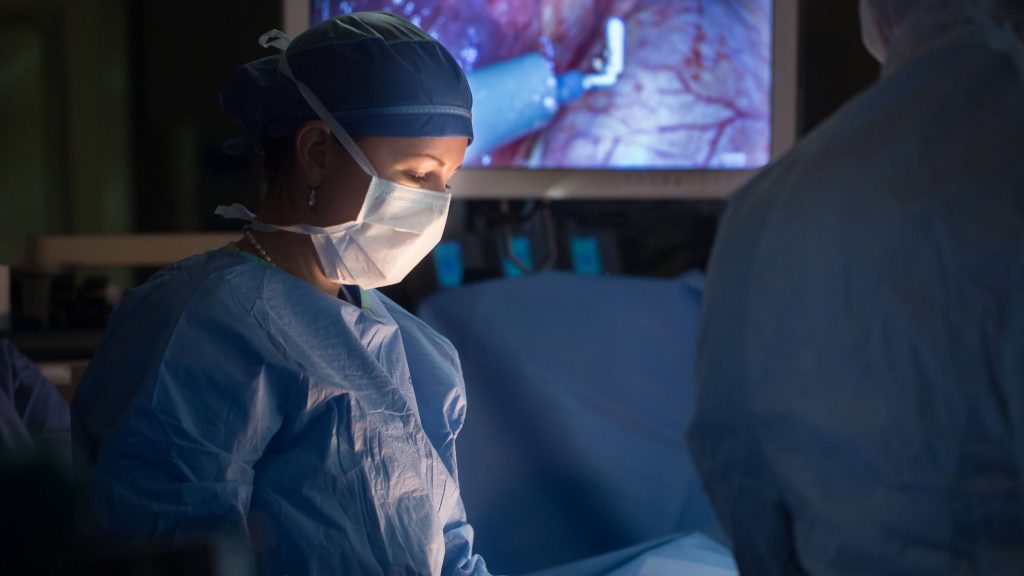-
Mayo Clinic Q&A podcast: Survivorship after surgery for lung cancer

More than 200,000 people in the U.S. will be diagnosed with lung cancer in 2022, according to the National Cancer Institute. A new lung cancer diagnosis can be scary and confusing, but having a support system can help.
"Probably the best advice I give patients with lung cancer is to build your village of support around you," says Dr. Shanda Blackmon, a Mayo Clinic thoracic surgeon. "Always see if you can have somebody come with you for your appointment, just to help you emotionally deal with things, to help you record what's being said, to help you collect that information, and then to also advocate for you."
If the cancer is confined to the lungs, surgery may be an option for treatment. Surgery is performed to remove the lung cancer and a margin of healthy tissue around the cancer site. Procedures to remove lung cancer include:
- Wedge resection to remove a small section of lung that contains the tumor along with a margin of healthy tissue.
- Segmental resection to remove a larger portion of lung, but not an entire lobe.
- Lobectomy to remove the entire lobe of one lung.
- Pneumonectomy to remove an entire lung.
The surgeon also may remove lymph nodes from a patient’s chest to check them for signs of cancer. The type of operation used for lung cancer treatment depends on the size and location of the cancer as well as how well a person’s lungs are functioning.
Dr. Blackmon recommends that patients explore all their surgical options.
"When you look at actual surgical options, you have minimally invasive surgery, or open surgery," explains Dr. Blackmon. "And the minimally invasive surgery has a lot of different options as well. Not every lung cancer surgery can be done minimally invasively. But if it can, certainly, the patient benefits."
Another important consideration is having your lung cancer surgery performed at a center that does a high volume of cases and is familiar with the type of procedure needed.
"When you go to have your car worked on — you go to the dealership that deals with your car specifically and someone who does it every day — they're going to be doing a better job than going to someone who's never even seen that type, make or model of car," says Dr. Blackmon. "I think we do that in life all the time. And it makes sense to do it in medicine, and in surgery especially."
After surgery for lung cancer, patients are often worried about short-term side effects, like shortness of breath and pain, as well as long-term worries about cancer recurrence. Both should be addressed as part of a cancer survivorship plan.
"Survivorship is part surveillance and part symptom management," says Dr. Blackmon. "The survivorship program here at Mayo Clinic really focuses on treating the whole patient. We have things like massage therapy. We have acupuncture. We have meditation. We have all kinds of resources that help patients to get their life back, get back in shape, and get all the parts of their body whole again as they start to heal from this really big surgery. But one thing that is so important is to continue to go back for that survivorship care with continued symptom monitoring and continued surveillance. That five-year period after the lung cancer surgery is so critically important."
On this Mayo Clinic Q&A podcast, Dr. Blackmon discusses what people can expect after surgery for lung cancer, and how to achieve the best quality of life.
Watch: Dr. Blackmon discusses lung cancer surgery.
For the safety of its patients, staff and visitors, Mayo Clinic has strict masking policies in place. Anyone shown without a mask was either recorded prior to COVID-19 or recorded in a nonpatient care area where social distancing and other safety protocols were followed.







